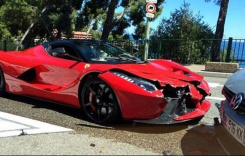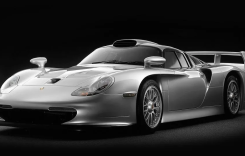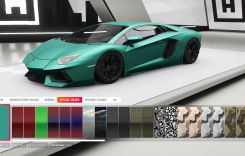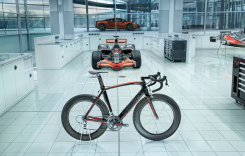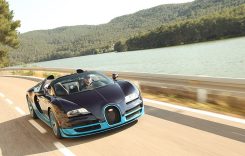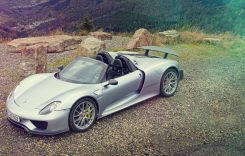Sitting on the dock of the bay, watching the tide roll away.

Otis Redding is stuck in my head as I sit in Monterey on a picture-perfect day about to ride the 2009 Suzuki M90. The bike looks every bit as sharp as its big brother, the M109R, as the early morning sun demonstrates that Suzuki has been careful to make sure the motorcycle has its share of shiny chrome bits. The big slash-cut pipes stand out the most in the bike’s first once-over.
Rolling through Monterey’s Cannery Row, the bike garners its share of stares. In a touristy, family-friendly area, nobody seems to be put off by the rumble of the exhaust of a dozen M90s in emission-conscious California, a testament to the job of Suzuki’s ability to temper its exhaust note to acceptable auditory levels.
Fans of Suzuki’s M-class of cruisers will be glad to know the M90 has all the styling chops of the popular M109R. A double cradle steel frame housing a 54-degree V-Twin is central to both. The nacelles vary only in a little chrome trim, but the signature trait of the cruiser is intact. You’d have to look close to realize small changes in the layout of the bodywork, little things like switching the layout of the seat lock key from the left to right side, or to notice changes to the rear brake and the moving of its fluid reservoir. When you look at it you think M109R, and I believe that this is the effect Suzuki intended.
Are you sure this thing’s a cruiser? It sure doesn’t handle like one.
Hiking a leg over the motorcycle for the first time I almost felt big at six-feet tall. Sure, the M90 is 2.4-inches shorter in overall length than the M109R, but that wasn’t it. Maybe it’s the fact that the drag-style handlebars are 0.8-inches closer, and the forward-mounted foot controls have been moved in 1.1-inches. And despite the fact that the M90’s seat is actually 0.4-inches higher, it has been retailored and is a little longer than the M109Rs to give riders a little more leeway while shifting around. Unlike the way the M109R’s bars stretch you out far-forward, the riding position on the M90 benefits from the reconfigured ergos in a more spine-friendly upright position.
Besides feeling more compact, the bike’s lighter curb weight is immediately noticeable as the 2009 M90 weighs in 41-lbs leaner than the larger bruiser cruiser. The 66.5-inch wheelbase along with the rider’s triangle places the center of gravity low and slightly ahead of the rear wheel. The compact frame and low COG mean the motorcycle is easily manageable at low speeds despite sporting a cruiser-class curb weight claimed at 723 lbs. A very workable clutch with a moderate to light pull gets an assist in low-speed handling, but the fact that it engages late in the pull prevents it from being totally newbie friendly. It’s great for tire-spinning action in the first few gears though.
Although the M90 gives up 321cc to the M109R, don’t think for a second this is a watered-down version of the larger mill. Torque comes on early in the powerband and the gears give generously for a long time and don’t sign off with the abruptness of other comparable V-Twins. This is a cruiser that benefits from Suzuki’s racing heritage with SCEM-plated cylinders (a proprietary nickel-phosphorous-silicone-carbide coating) and Suzuki’s Dual Throttle Valve (SDTV) fuel injection. It’s not simply a retuned version of Suzuki’s C90 cruiser either, which would have been the easy way out. The
It would have been easy for Suzuki to source the mill from its C90 classic cruiser, but it went for a more performance-oriented 1462cc mill for the M90.
liquid-cooled V-Twin’s camshaft housing and head cover are separated with a rubber insert, unlike the C90’s engine, where the head cover works as the camshaft housing. Suzuki also moved the mechanical damper from behind the driveshaft to the crankshaft axis and reduced the number of shafts inside the engine from four to three which shaved off a claimed 50mm. The engine’s quiet efficiency and rubber mounting keeps vibrations to a minimum and riders happy. The engine doesn’t have M109 rip-your-arms-out-of-your-sockets power, but never during the course of our ride did I fail to have enough juice at my disposal, even while executing some dicey passes on short straight stretches of Hwy 1.
The 1462cc powerplant provides the punch to the 200mm rear Bridgestone via a 5-speed constant-mesh transmission. Shifting is smooth and reliable and neutral is easy to find, which isn’t always the case. There is a little clunkiness in the first few gears, but nothing in comparison to American V-Twins. Shift shock is reduced by a friction damper fitted between second gear and the driveshaft of the tranny.
The final link to the powertrain trio is the M90’s burly pipes. A lot of R&D went into the exhaust, including quality and emotional evaluations. Don’t think an exhaust’s sound strikes an emotional chord?
Then consider that potato-potato-potato is trademarked and instantly recognizable. Suzuki worked hard to match the M90’s sound quality to M109R standards. But based on the reaction of the crowds crossing the street at Cannery Row, the exhaust note is robust but not overbearing. At a standing rev it doesn’t sound as good as when you’re at throttle and it’s bouncing off cars in traffic. As big as the pipes are, you’d expect them to really pound. A catalyzer built into the mufflers might reduce hydrocarbons, carbon monoxide and nitrogen oxide emissions but it doesn’t help when it comes time to growl.
Sitting on a dock of the bay – the blue of the bike, the blue of the ocean, and a blue sky. You couldn’t ask for better riding weather.
Carmel Valley Road deposits us back on to scenic Hwy 1. We head south towards Big Sur where a wealth of sweepers and sharp turns await. A truck that went over the rails is a grim reminder that this is not a place to lack confidence in your brakes. The M90’s brakes are up to the task. Unlike some cruisers, I didn’t hesitate to get on the dual disc front hard entering the turns, as they have great feel. The rear brake applies even pressure without locking up easily. Mashing hard on the rear, stopping pressure is progressive and does an above-average job of keeping the bike upright.
Overall ride quality was smooth, with the KYB coil-over rear shock and 43mm inverted fork working in conjunction with the plush padded seat to provide plenty of comfortable riding miles. It handles better than your average cruiser, benefitting from Suzuki’s choice of a 200mm rear on the back end, and can be ridden aggressively into corners until scraping a peg. But the pegs are set wide and scrape easily. Ground clearance is limited because in order to accommodate the wide dual tanks and the girth of the pipes, an ugly lower bracket had to be fobbed up to push the footpegs out wide enough for a rider to reach.
The crescent-shaped instrument cluster of the M90 is tucked neatly above the bars inside the headlight cowl and requires a quick glance to locate the needle on the analog speedo. In the right hand corner of the speedometer readout is a small LCD panel that you can flip through an odometer, dual trip meters or a digital clock display. A small switch on the left handlebar console engages the LED turn signals, which are not self-canceling. A chrome console built onto the 4.8-gallon tank displays the minimum – signal indicator lights, a
Carousing on Cannery Row with one of my old buddies, Johnny Law!!
Neutral light, and a hi-beam indicator. There’s no windscreen, so wind buffeting is inevitable, but never became noticeable up until around 70mph. Nothing that couldn’t be remedied by a trip to the M90 Accessories book and the purchase of a shorty factory windscreen.
So after a day spent in the saddle of Suzuki’s newest middle-class cruiser contender, my fears that it would be a neutered M109R were assuaged. On the contrary, the laid-back riding position made it more comfortable to ride while the lower weight and the smaller chassis give it handling that defies typical cruiser categorization. Throw in an engine that will spin the tires in the first three gears and you’ve got a lot of bike for $10K.
Price wise, the M90 is the second-most affordable cruiser compared to other motorcycles in the 90-cubic-inch range. Only Honda’s VTX1300 comes in cheaper, with a MSRP of $9,899. Yamaha’s VStar 1300 rings in right above the M90 with a sticker price of $10,290. The American manufacturers top the charts, with a base model H-D Dyna listing at $11,999, while a Victory Vegas 8-Ball is priced at $13,799.
While entertaining the thought of building a motorcycle to compete in the $10,000, mid-sized cruiser range, Mel Harris and the crew at American Suzuki Motor Corporation thought that providing a technologically-sophisticated motorcycle with proven styling for a great value would be a winning formula. To get a cruiser with almost 1500cc of power that handles like the M90, all for $9,999, I think they’re on to something. Keeping it under that magic five digit threshold in tough economic times is key. Suzuki performance and reliability only help seal the deal.

